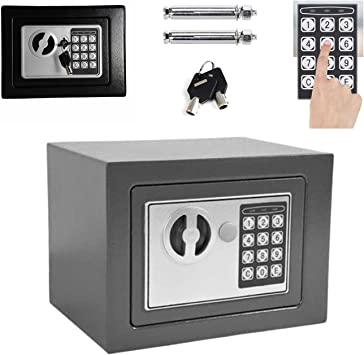
You're not the only person who's ever wondered about how stocks work. You're not the only one who wonders how dividends and capital appreciation work. This article will cover IPOs, supply and demand. Then, we'll be covering IPOs. What does this mean for you investments? IPOs are called that because they have a purpose. These IPOs are like shares in corporations - they give ownership to the company and give you voting rights.
Dividends
You may ask yourself "How do I reinvest dividends?" It is easy. Companies distribute dividends to shareholders as cash. Dividends can be paid in cash, options, stocks, or as debt payments. Some companies distribute their dividends in the form of property or services. It is a great way to protect your income in volatile stock markets. Computershare is one company that offers a dividend-reinvestment plan.

Capital appreciation
To understand how stocks work, it helps to understand the stock market. Imagine that you have invested $100 in a stock. Then, when it rises to $502, the stock's worth is more than $200. This represents a 20% return on investment. Different factors can affect the value of an asset, including the economy and factors specific to an investment. However, the rise in value will result in a rise in the asset's price.
Supply and demand
Stocks: How do supply and demand interact? Demand is the amount of purchases that a stock receives from buyers. This is reflected in the price of a stock. When a stock price rises, this means there is more demand than supplies, and a buyer bids higher. This process is known as "overbidding," and it benefits the buyer and the seller. Interest rates, economic data and market dynamics are all factors that influence the demand for stocks.
IPOs
How do IPOs work The company will issue a prospectus along with additional documents. These documents will provide information about the company's plans and business. It will also detail how to apply for shares. Investors can apply for shares via an approved intermediary once the prospectus has been issued. Typically, the IPO has been oversubscribed. This means more applications were received that the number of shares on offer. These cases may lead to companies having to limit the number or offer of shares to make sure they don't exceed the allotted amount.

The foundations of a company
Fundamental analysis is the process used to determine the true worth of a company. Investors can find out the true worth of a company simply by reviewing its financial results and historical profit or loss statements. Investors will also be able to read about the company’s future plans. These are the "golden keys" to fundamental analysis. These reports include graphics and charts. This information allows investors to make informed decision based upon it.
FAQ
Should I diversify the portfolio?
Many believe diversification is key to success in investing.
Many financial advisors will advise you to spread your risk among different asset classes, so that there is no one security that falls too low.
But, this strategy doesn't always work. In fact, it's quite possible to lose more money by spreading your bets around.
Imagine that you have $10,000 invested in three asset classes. One is stocks and one is commodities. The last is bonds.
Let's say that the market plummets sharply, and each asset loses 50%.
You have $3,500 total remaining. However, if you kept everything together, you'd only have $1750.
In reality, your chances of losing twice as much as if all your eggs were into one basket are slim.
It is essential to keep things simple. You shouldn't take on too many risks.
Which investments should I make to grow my money?
It's important to know exactly what you intend to do. If you don't know what you want to do, then how can you expect to make any money?
You also need to focus on generating income from multiple sources. In this way, if one source fails to produce income, the other can.
Money doesn't just magically appear in your life. It takes planning and hardwork. To reap the rewards of your hard work and planning, you need to plan ahead.
Can I get my investment back?
You can lose everything. There is no guarantee that you will succeed. There are however ways to minimize the chance of losing.
Diversifying your portfolio is one way to do this. Diversification helps spread out the risk among different assets.
You could also use stop-loss. Stop Losses allow you to sell shares before they go down. This decreases your market exposure.
Margin trading is also available. Margin trading allows for you to borrow funds from banks or brokers to buy more stock. This can increase your chances of making profit.
Which fund is the best for beginners?
When it comes to investing, the most important thing you can do is make sure you do what you love. FXCM is an online broker that allows you to trade forex. If you are looking to learn how trades can be profitable, they offer training and support at no cost.
If you do not feel confident enough to use an online broker, then try to find a local branch office where you can meet a trader face-to-face. You can ask them questions and they will help you better understand trading.
Next is to decide which platform you want to trade on. CFD and Forex platforms are often difficult choices for traders. Although both trading types involve speculation, it is true that they are both forms of trading. Forex is more reliable than CFDs. Forex involves actual currency conversion, while CFDs simply follow the price movements of stocks, without actually exchanging currencies.
It is therefore easier to predict future trends with Forex than with CFDs.
Forex trading can be extremely volatile and potentially risky. CFDs are preferred by traders for this reason.
We recommend you start off with Forex. However, once you become comfortable with it we recommend moving on to CFDs.
Statistics
- They charge a small fee for portfolio management, generally around 0.25% of your account balance. (nerdwallet.com)
- As a general rule of thumb, you want to aim to invest a total of 10% to 15% of your income each year for retirement — your employer match counts toward that goal. (nerdwallet.com)
- Over time, the index has returned about 10 percent annually. (bankrate.com)
- Some traders typically risk 2-5% of their capital based on any particular trade. (investopedia.com)
External Links
How To
How to properly save money for retirement
Retirement planning involves planning your finances in order to be able to live comfortably after the end of your working life. It's when you plan how much money you want to have saved up at retirement age (usually 65). Consider how much you would like to spend your retirement money on. This includes travel, hobbies, as well as health care costs.
It's not necessary to do everything by yourself. Many financial experts can help you figure out what kind of savings strategy works best for you. They'll assess your current situation, goals, as well any special circumstances that might affect your ability reach these goals.
There are two types of retirement plans. Traditional and Roth. Traditional retirement plans use pre-tax dollars, while Roth plans let you set aside post-tax dollars. Your preference will determine whether you prefer lower taxes now or later.
Traditional retirement plans
You can contribute pretax income to a traditional IRA. Contributions can be made until you turn 59 1/2 if you are under 50. After that, you must start withdrawing funds if you want to keep contributing. You can't contribute to the account after you reach 70 1/2.
A pension is possible for those who have already saved. These pensions are dependent on where you work. Some employers offer matching programs that match employee contributions dollar for dollar. Others offer defined benefit plans that guarantee a specific amount of monthly payment.
Roth Retirement Plans
Roth IRAs allow you to pay taxes before depositing money. Once you reach retirement, you can then withdraw your earnings tax-free. However, there may be some restrictions. For example, you cannot take withdrawals for medical expenses.
A 401(k), another type of retirement plan, is also available. These benefits may be available through payroll deductions. These benefits are often offered to employees through payroll deductions.
401(k), Plans
Employers offer 401(k) plans. These plans allow you to deposit money into an account controlled by your employer. Your employer will automatically contribute to a percentage of your paycheck.
The money grows over time, and you decide how it gets distributed at retirement. Many people choose to take their entire balance at one time. Others distribute the balance over their lifetime.
Other types of Savings Accounts
Some companies offer different types of savings account. TD Ameritrade allows you to open a ShareBuilderAccount. With this account you can invest in stocks or ETFs, mutual funds and many other investments. You can also earn interest on all balances.
At Ally Bank, you can open a MySavings Account. You can deposit cash and checks as well as debit cards, credit cards and bank cards through this account. You can also transfer money from one account to another or add funds from outside.
What to do next
Once you've decided on the best savings plan for you it's time you start investing. Find a reliable investment firm first. Ask friends or family members about their experiences with firms they recommend. Check out reviews online to find out more about companies.
Next, figure out how much money to save. This step involves figuring out your net worth. Your net worth includes assets such your home, investments, or retirement accounts. It also includes liabilities such debts owed as lenders.
Divide your networth by 25 when you are confident. This number will show you how much money you have to save each month for your goal.
For example, let's say your net worth totals $100,000. If you want to retire when age 65, you will need to save $4,000 every year.